Rolling Coal: Cool or Terrible?
Rolling coal is a unique American phenomenon featuring diesel trucks billowing black smoke clouds from their exhaust. Let’s look into these soot factories.
Diesel Trucks Blowing Black Clouds
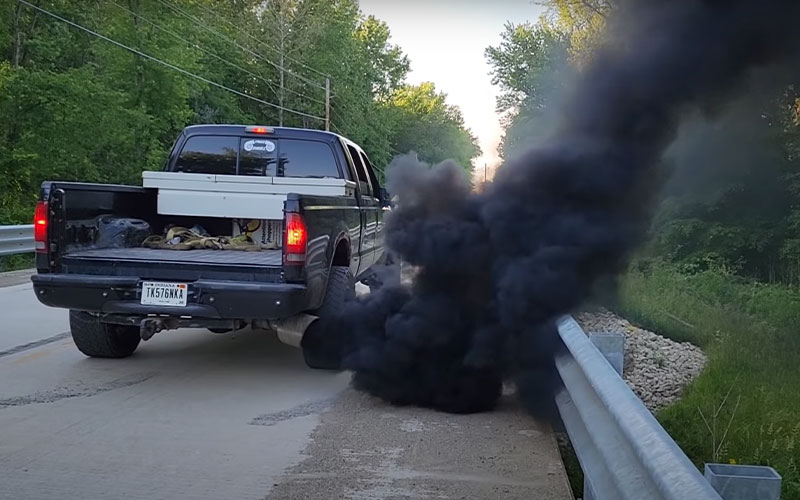
Rolling coal is a vehicular phenomenon found primarily in North America that takes place when a diesel-powered engine is modified to increase the amount of fuel entering the combustion chamber. So much in fact, it cannot all be burned; thereby emitting large plumes of black soot exhaust clouds. Today it is practiced as a form of entertainment or protest of environmental regulations. In a Boston Globe article, coal rolling practitioner Craig Wedge summed up the thought process behind this pursuit when he said, “It might have something to do with being a rebel… and trying to prove something to other people.”
Rolling Coal’s Roots
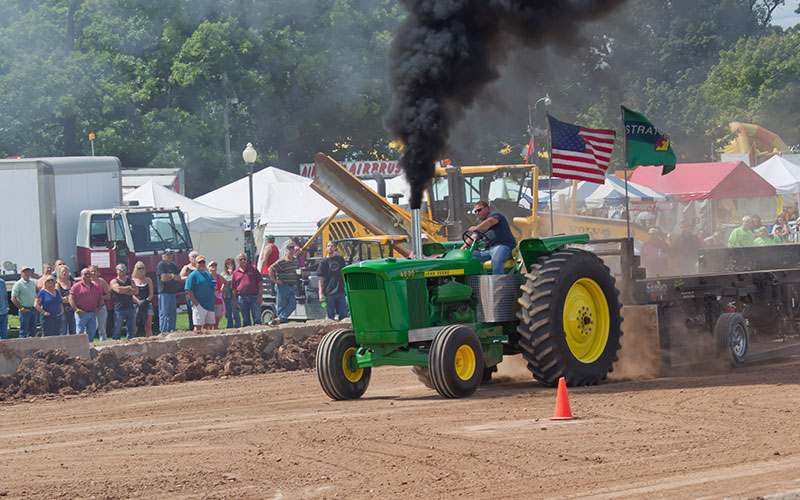
Though rolling coal has become a political and environmental flash point today, its roots trace to tractor pull competitions at county fairs and the like. For these events, a pair of diesel trucks face off to see who can drag a heavily weighted the sled the furthest. In order to increase power and speed, competitors modify their powertrains to add excess fuel to the motor, which has the complimentary effect of creating large, billowing clouds of black smoke flowing from their exhaust.
How to Roll Coal
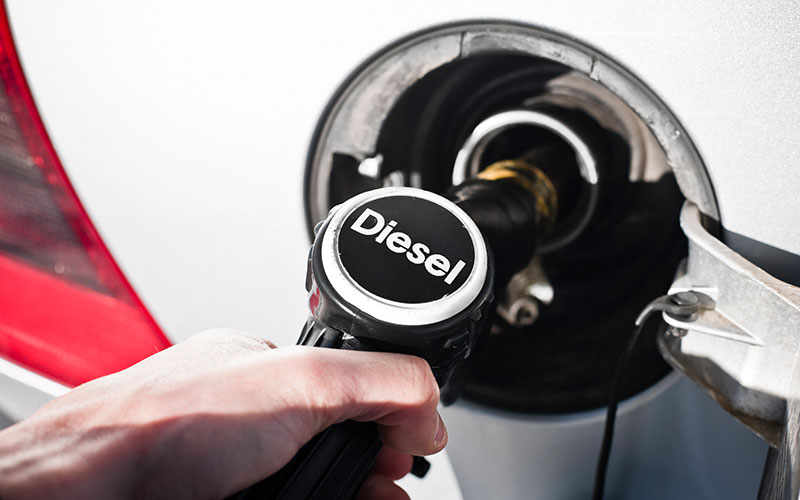
In order to start rolling coal, diesel power is required as gasoline won’t burn thick enough or black enough no matter the level of engine modifications. Whereas diesel fuel emits the particulate matter that makes up black soot and the resultant spectacle of smoke. Technically, any vehicle with a diesel engine can create this effect including Volkswagens, Audis, and Mercedes-Benz cars. However, the majority of coal rolling activity happens in the heavy-duty pickup truck arena. Namely Ford’s Power Stroke lineup, GM’s Duramax trucks, Dodge with their Cummins-brand diesels, and Nissan, which also offers a Cummins-powered diesel engine in their Titan.
Engine Modifications
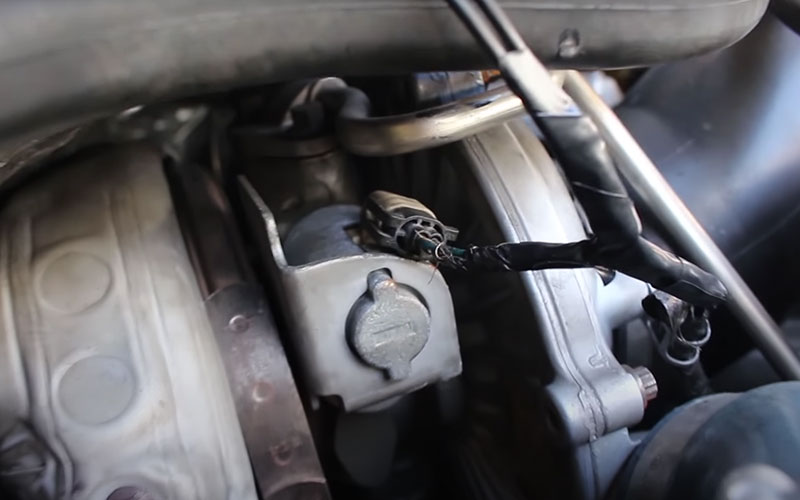
There are three common approaches to modifying a vehicle for rolling coal. The most highly effective method is also the most expensive and complicated. It involves replacing the stock fuel injectors with oversized versions that can spray more diesel into the cylinders, but this requires custom tuning and additional powertrain modifications to ensure the truck runs properly. A less expensive method that doesn’t add any performance benefit is the use of a “defeat device” or engine tuning module that drivers can use to flood the engine with excess diesel. That fuel doesn’t get used in producing power, it instead just gets burned off in the form of coal rolling smoke plumes.
Configuring a DIY smoke switch is the least expensive approach to rolling coal. It involves splicing into the turbocharger wiring to trick the engine into a state of excessive fuel consumption. This method is considered less safe than the “defeat device” because it does not come with safety provisions like an exhaust gas temperate gauge typically found on those tuning devices. Increasing engine power in general is also useful in creating rolled coal, so aftermarket equipment like cold air intakes, freer flowing exhaust systems, and high-performance engine tuning software can be employed.
Other Modifications for Rolling Coal
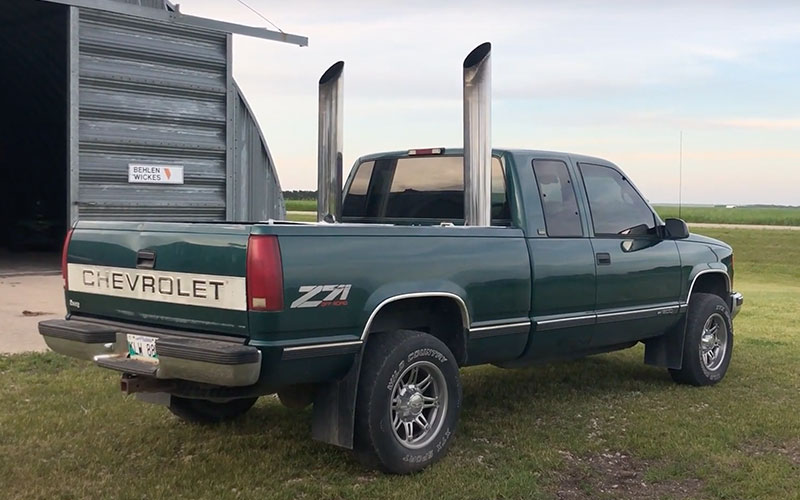
Aesthetically, proponents of rolling coal suggest modifying the exhaust piping to better display their smoke. While a standard exhaust system will emit black smoke without issue, the addition of “chimney stacks” add visual flair. Significantly larger in diameter than a stock exhaust tip, these stacks are commonly mounted in the truck bed, requiring exhaust routing modifications. Resembling the type of system found on big rigs or even boats, chimney stacks allow users to pretend they are driving tractor-pull rigs on the open road. Additional upgrades frequently include a very tall suspension lift and oversized all-terrain tires with aftermarket wheels in the “bro dozer” style.
Who’s Rolling Coal?
This act of conspicuous air pollution is generally performed by drivers unhappy with environmental regulations. As such, emission control equipment fitted from the factory, like particulate filters and catalytic converters, may be removed as a way to flout these rules. However, coal rollers may also point to the improved fuel efficiency that is unlocked by removing these types of engine restrictions. This mentality has blossomed into a general disdain of motorists driving “environmentally friendly” vehicles like a Toyota Prius or Tesla, who are seen to be associated with the movement towards protecting the planet from harmful emissions.
YouTube hosts a litany of videos displaying this disdain in action. Often referred to as “Prius repellent”, coal rollers will target a driver of said Prius, Tesla, or the like, move in front of them, and unleash their “Prius repellent”. This has a three-part effect. The Prius driver is made aware that coal rollers do not like their car, the Prius driver cannot see due to the thick black smoke, and they are made to inhale the rolled coal. This unique and unsafe maneuver has also been seen performed against bicyclists, drivers of foreign cars, and pedestrians.
Government Intervention on Rolling Coal

In the face of this flouting of the rules, the federal government and a wide range of state governing bodies have issued new laws specifically aimed at curtailing coal rolling. In 2014, the US Environmental Protection Agency (EPA) made the practice a violation of the Clean Air Act by prohibiting the manufacture, sale and installation “of a part for a motor vehicle that bypasses, defeats, or renders inoperative any emission control device…”
New Jersey decreed the retrofitting of diesel-powered vehicles for the purpose of coal rolling to be prohibited. This happened in 2015, shortly after state Assemblyman Timothy Eustace was coal rolled on the NJ Turnpike in his Nissan Leaf. Illinois has proposed legislation to levy a $5,000 fine for altering vehicular emissions equipment, Connecticut created a law to prevent bias attacks employing the practice of rolling coal, and Maine ruled in 2019 that rolling coal is illegal.

Much of this legislation is centered on concern for road safety due to impaired visibility during displays of coal rolling. When performed at speed on the road, videos show coal rollers using hard acceleration as a technique for maximizing smoke production. This can be dangerous, especially for inexperienced drivers.
It remains to be seen if legislation against rolling coal has the desired effect of outlawing the practice. On the one hand, the EPA has leveled multimillion-dollar fines at companies selling “defeat devices” along with ongoing lawsuits. On the other hand, a quick Google search results in just such devices available for purchase, not to mention online forums and YouTube videos detailing how to roll coal.









